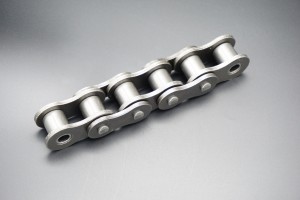Roller link joints are integral components in a variety of mechanical systems, including machines, vehicles, and even roller coasters. Their purpose is to facilitate smooth movement when connecting moving parts for efficient operation. However, an interesting question arises: does the number of roller link joints affect the overall load capacity? In this blog, we will delve into the intricacies of roller linkage joints and explore their impact on the load carrying capacity of different systems.
Learn about Roller Link Joints:
To understand the relationship between the number of roller linkage joints and load capacity, we must first grasp the function of these joints. Roller link joints consist of cylindrical rollers interconnected by link plates. The rollers roll and slide along the chain, allowing the connected parts to move relative to each other. This design provides flexibility and minimizes friction for efficient power transmission and load distribution.
The role of load capacity:
The load capacity of a mechanical system is the maximum weight it can effectively support without affecting its structural integrity or performance. It is critical to consider this factor when designing and operating machinery, as exceeding load capacity can lead to failure, accidents, and even catastrophic failure. Therefore, determining the effect of roller link joints on load carrying capacity is of paramount importance to engineers and designers.
Analysis Impact:
1. Higher number of roller joints:
Intuitively, one might think that the greater the number of roller link joints in the system, the greater the load capacity. However, the reality is more complicated. While increasing the number of joints can distribute the load over a larger span, it also introduces additional connection points that can become weak links. Therefore, due attention must be paid to material quality, construction techniques and maintenance to ensure the reliability of the joints.
2. Optimize efficiency:
The number of roller linkage joints should be carefully determined according to the specific requirements and constraints of the system. Engineers strive to strike a balance between load capacity and overall efficiency. Too few roller link joints can cause individual joints to be overstressed and wear prematurely, compromising system reliability and increasing maintenance downtime. Conversely, too many joints add unnecessary weight and complexity without proportionally increasing load capacity.
3. Engineering Innovation:
As technology advances, engineers continually seek to optimize roller joint designs to meet changing load capacity demands. Innovations such as the use of higher quality materials, improved lubrication systems and novel geometries provide opportunities for enhanced load carrying capacity. At the same time, advances in computer-aided design and simulation tools can more accurately predict the impact of roller link joints on load capacity, facilitating optimal design from the outset.
In summary, the number of roller link joints does affect the load capacity of a mechanical system; however, this relationship is not always straightforward. When determining the optimal number of roller linkage joints, engineers must consider a variety of factors, including construction quality, maintenance practices and system requirements. By striking a balance between load capacity and overall efficiency, they ensure that machinery operates reliably and safely, resulting in smooth, efficient operations across industries.
Post time: Aug-22-2023

